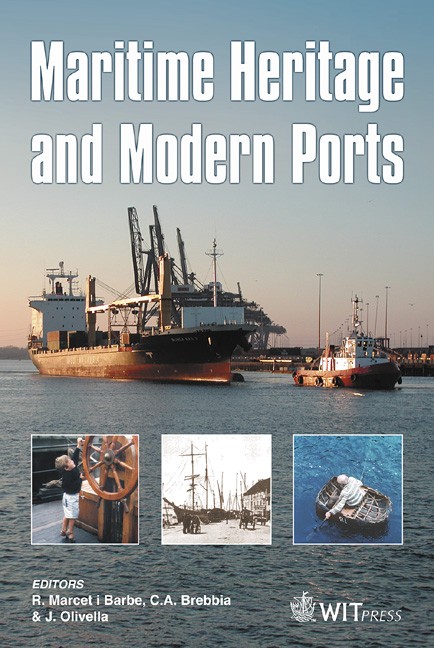Port Simulation Model For The Discharge And Delivery Of Imported Coal For A Thermal Power Plant Located In Lazaro Cardenas Port, Mexican Pacific Coast
Price
Free (open access)
Transaction
Volume
79
Pages
11
Published
2005
Size
465 kb
Paper DOI
10.2495/MH050321
Copyright
WIT Press
Author(s)
C. Sánchez, R. Uribe & J. C. Espinal
Abstract
This model is built in order to simulate the ship arrivals, taking into consideration the present traffic in the port to transport 9.5 million ton/year of imported coal for a new thermal power plant (TPP). Also, to determine the optimum number and size of piers needed to handle the coal, taking into account the daily consumption of the TPP, and the storage capacity variation during the useful life of the TPP, assuming it to be 50 years. The model structure is presented to show clearly the whole port handling system for six terminals to handle varied types of cargoes such as oil, industrial coal, fuel coal, grains and containers, including the ship arrivals to satisfy the coal needs. Keywords: port congestion, belt conveyors, port throughput, berth commitment, queueing theory, delay time, unloading capacity, coal inventory, bulk carriers. 1 Introduction In order to satisfy the growing power demand in Mexico, CFE (Federal Commission of Electricity) is analyzing the possibility of building a new Thermal Power Plant (TPP) in the port of Lazaro Cardenas, Mich., Mexico, with a final power capacity of 2 800 megawatts (MW) with groups of 700 MW units each one. The fuel is imported thermal coal from Australia, China and Russia and a mean unload capacity in one or two piers of 9.5 million ton/year. The research presented here deals with the ship traffic modeling for the present conditions of the port taking into consideration the increment of ship arrivals for a new coal terminal in first place, assuming it to be 50 years.
Keywords
port congestion, belt conveyors, port throughput, berth commitment, queueing theory, delay time, unloading capacity, coal inventory, bulk carriers.





